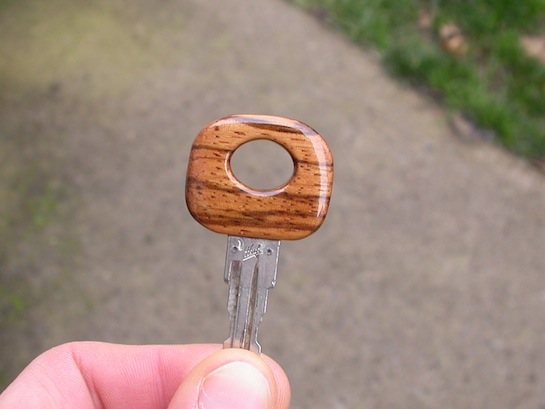I've made several wood key heads for myself and folks here on the forum. Around 10, two for myself and the rest y'all. I thought I do a write-up to help you other wood working types along. Any type of hard wood will work. Stay away from the soft woods they'll brake too easily(i.e. conifers - pine, fir, cedar, etc). Mercedes uses Zebra wood or Zebrano as they call it, which is what I'm using in this writeup. I've also used Myrtle wood, and I'm about to make one with Purple Heartwood. Just for reference zebra wood is $17 a board foot. Oak is $3-$4 a board foot. Fortunately you only need a tiny bit for a key. Anyway on to the juicy stuff.
I start with a little block that is a little wider than the height of the key head. Then I cut two thin slices, about and 1/8" thick, out of it with a band saw, table saw works as well but take more wood out of the block so the grain may not match up as well on the sides of the key.
The block
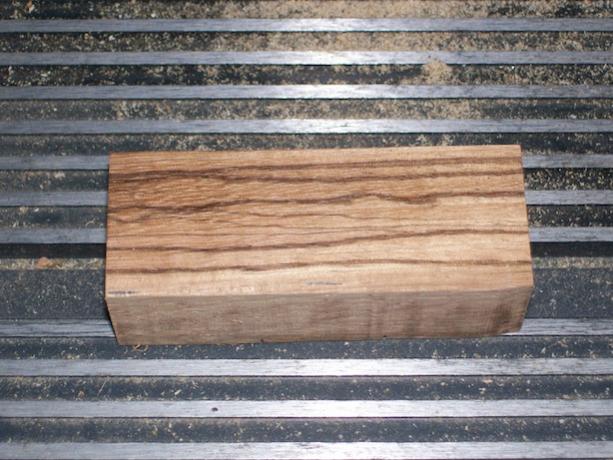
Two halves of the key head

Then I decide which half I want to cut out the notch for the key head. I used to cut half the thickness of the key into each half of the wood. But it's really hard to get things to line up properly. So I started cutting the notch into one side and then gluing the two together. Has worked much better for the last several keys I've made. I square up the key on the wood and trace the T shaped end onto the wood.

Then using a Dremel tool I start removing the wood. I mainly use the two round tipped bits, occasionally I use the cone shaped one to get nice sharp corners. I used the larger of the two round bits to remove most of the material. Then switch to the little one to clean up the corners. I try to make the key fit tightly, but a little slop is okay, because I use polyurethane glue which will expand and fill the open spaces and actually glue the key into the wood. But the tighter it fits the better. You can't tell in the photos but the T head part of the key is not symmetrical, so you have to make sure you keep the orientation the same through this process.
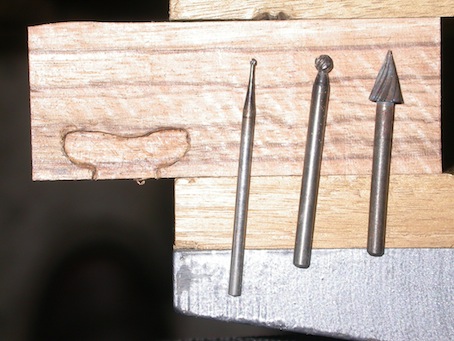

Then I glue the to halves together. I use Probond Polyurethane glue. It will expand out the edges, but it cleans off easily. Here is it after I've clean off the little bits of glue that oozed out.

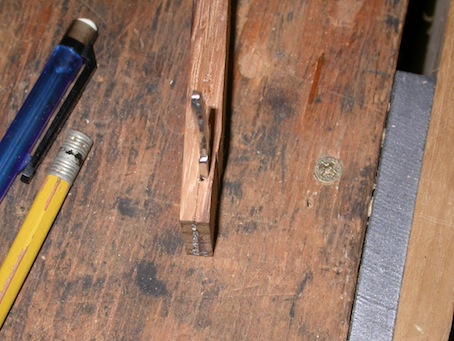
Then I trace the key head shape. Cut it out on the band saw. Then I sand the edges down to the line and make sure I have a good shape going. Then I trace the hole onto it. I use a small drill bit and drill as much of the hole material out, then using the dremel with the cone shaped bit I clean it up and shape it. Once the shape of the key and hole are they way I want them, then I start rounding and shaping the key. Shape to you preference. I like nice round edges, and I actually shape the face of the key to a convex shape, making it thinner on the edge than in the middle. This keeps the strength of the thickness of the wood but makes it look a little daintier. I usually keep the metal key part taped up to keep it from getting scratched.
Note: Since both halves are cut to the same thickness you have to sand down the side that you didn't notch for the key so you have equal thickness passed the width of the key. Or you can cut one half thinner to start with.
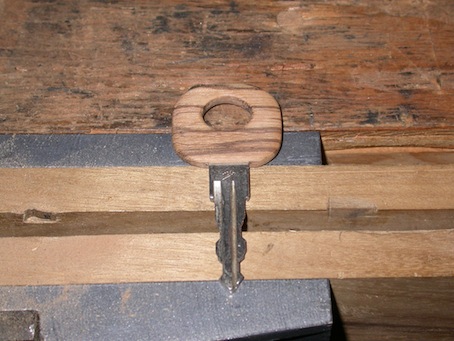
Now it's ready for staining and clear coat. Stain to your preference. I also keep the key taped up through this process as well. Zebra wood is extremely hard and it doesn't absorb stain very well. I use a 50/50 mix of a red stain and a chocolate brown stain. This makes it match the wood trim in the car pretty well. I put a couple coats on. I wipe it on pretty thick, then let it sit for couple minutes or so. Then wipe it off. Let it dry for a good while, then do it again. Once the stain is all dry. I start the clear coat. I use Minwax Fat-Drying Polyurethane Clear Gloss. I usually end up putting 6-8 coats on. The first few coats aren't real smooth because of all the pours in the wood. I put a coat on. Let it dry for 24 hours. Then hit it gently with some fine steel wool, wipe it off, and put another coat on. I continue this process until I have a nice smoooooth finish. I always apply real thin coats. If you coat is too thick you'll get drips, and then you get to sand it down and before you can continue.
Stained

1 coat of clear

The Finished Product.
